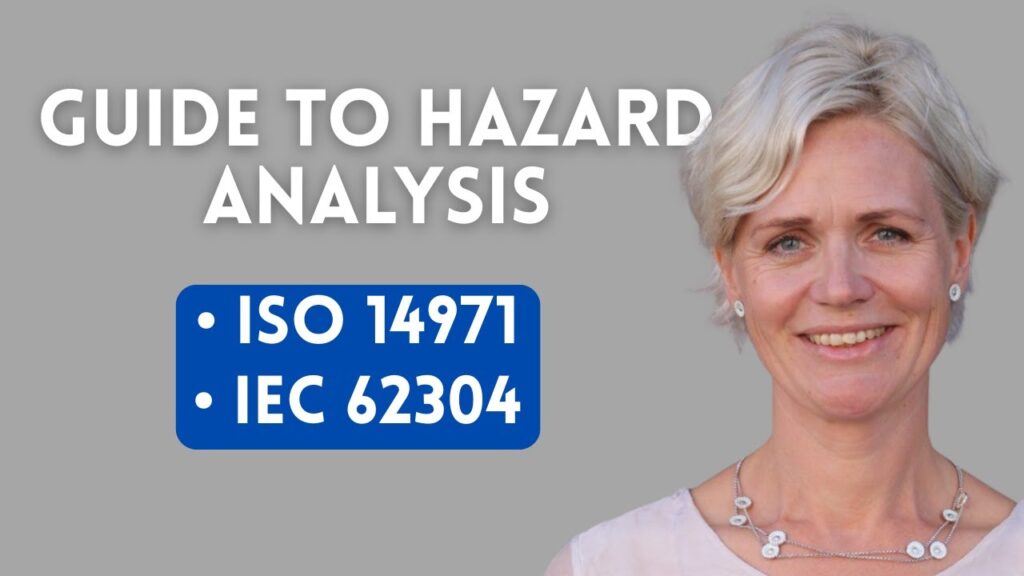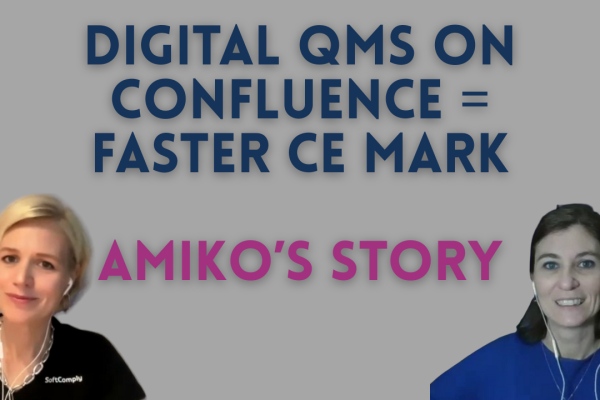Medical device risk management isn’t just another regulatory checkbox. It’s the foundation that proves your device is safe for patients and users. When auditors come knocking, they’ll scrutinize your risk management process more than almost anything else. Get it wrong and you’re looking at serious compliance issues.
I’ve put together this comprehensive guide to walk you through everything you need to know about medical device risk management, from the basic standards to practical implementation using modern tools.
Watch my detailed video walkthrough:
Learn why risk management is crucial for safety, how it helps during audits, and see a practical demonstration of conducting hazard analysis using SoftComply Risk Manager Plus.
Two Essential Standards You Must Follow
For medical device risk management, you’ve got two key standards:
ISO 14971 is your primary standard for medical device risk management. This covers the overall risk management process for all medical devices.
IEC 62304 becomes essential if your medical device contains software or if you’re developing software as a medical device. This standard specifically addresses medical device software risk management requirements.
Medical Device Safety
Before diving into the technical details, let’s establish what safety actually means in the medical device context. Based on ISO 14971 safety is freedom from unacceptable risk – that’s the fundamental requirement your device must meet.
This definition might seem circular at first (what makes a risk “unacceptable”?), but it’s actually quite practical. You’ll determine acceptability based on whether patients and users can reasonably live with the residual risks, considering the device’s intended benefits.
Hazard Analysis: Your Must-Have Medical Device Risk Analysis Method
Hazard analysis is a top-down risk management approach that you absolutely must perform. It examines medical device hazards, hazardous situations, and the potential harms these hazards can cause.
Understanding Hazards vs. Hazardous Situations
A hazard is a potential source of harm. Hazards exist all around us, but they won’t necessarily hurt anyone when medical devices are used in controlled manner. However, uncontrolled situations or specific sequences of events can create hazardous situations where these hazards become realized and may cause harm to users or patients.
7 Steps of Hazard Analysis
Here’s how you conduct hazard analysis:
1. Identify All Hazards
Document every potential source of harm by thinking through what could possibly go wrong in any foreseeable situation. Consider both normal use and reasonably foreseeable misuse.
2. Describe Hazardous Situations
Document all foreseeable sequences of events that could lead to situations where hazards might be realized. What specific circumstances could cause these problems?
3. Determine Potential Harm
For each hazardous situation, identify what harm (e.g. injury) could occur to patients or users when things go wrong.
4. Evaluate the Risk
Rate both the probability of occurrence and the severity of harm for each identified risk. Evaluate whether the risk is acceptable based on your predefined acceptability criteria.
5. Control the Risk
If the risk is on unacceptable level, you will have to control the risk. In other words, put in place some mitigation actions to lower the risk to acceptable level.
ISO 14971 describes three types of risk controls that you can put in place:
- Inherently safe design that can remove the hazard altogether;
- Protective measures like alarms and physical guards in the medical device;
- Information for safety through labeling and user instructions.
For software-based medical devices, risk control measures typically involve implementing additional software items that serve as protective measures. You’ll need to establish clear traceability between identified risks and the specific software requirements that control them. You will also need to document the link between the hazard and the risk control to establish traceability, which is a regulatory requirement.
6. Test the Risk Controls
To ensure that the risk controls are lowering the risk as expected i.e. to demonstrate their effectiveness, you will need to test each of them. Don’t forget to document the link between tests and the mitigation actions to establish traceability between controls and tests.
7. Conduct Residual Risk Assessment
Finally, you will need to assess the risk again to see if the overall risk class has been lowered to acceptable level. If not and if there is no way to lower the risk any further, you will have to conduct a Risk Benefit Analysis to describe how the health benefits of the device use outweigh the residual risk.
Risk-benefit analysis involves three key activities:
- Summarize all identified risks;
- Summarize all proven benefits of using the medical device;
- Organize a meeting with your project, management, regulatory and quality team members to agree that:
- All risks have been mitigated as far as reasonably possible;
- Additional risk controls wouldn’t significantly reduce risks any further;
- Each residual risk and the overall device risk is acceptable because the benefits of using the device outweigh the risks.
Practical Methods for Conducting Risk Management
Most teams conduct risk management through:
- Structured checklists to ensure comprehensive hazard identification;
- Group brainstorming sessions to capture diverse perspectives on potential risks;
- Analysis of similar devices already on the market to learn from their risk profiles.
For software-based medical devices, I also recommend implementing FMEA (Failure Modes and Effects Analysis) alongside hazard analysis. FMEA provides a more detailed, bottom-up analysis that complements the top-down hazard analysis approach.
Streamlining Risk Management with Modern Tools
Managing risk analysis manually through spreadsheets quickly becomes unwieldy, especially when you need to maintain traceability between risks, control measures and verification activities.
SoftComply Risk Manager Plus offers a comprehensive solution for conducting hazard analysis and FMEA directly within Jira Cloud. The tool provides:
Risk Model Templates
Pre-built templates based on various international standards and risk management frameworks including ISO 14971 that you can customize for your specific needs. You can choose from:
- Two-dimensional risk matrices (severity and probability);
- Three-dimensional risk matrices (severity, probability and detectability);
- Risk score-based models (with up to 10 different risk assessment iterations (initial, current, target, residual, etc.)
- Nested risk models where one risk model can be used as an input to another risk model.
Integrated Risk Register Templates
The spreadsheet-style interface allows you to:
- Document hazardous situations and potential harms;
- Assign risk owners for accountability;
- Evaluate severity and probability levels;
- Automatically calculate risk classes;
- Link mitigation actions (often software requirements from other projects);
- Connect verification activities (typically test cases);
- Conduct residual risk assessments.
Traceability Management
One of the most critical regulatory requirements in medical device risk management is maintaining clear traceability. The SoftComply Risk Manager Plus automatically links risks to their control measures and verification actions ensuring the full traceability that you can provide during audits.
Try SoftComply Risk Manager Plus free for a month and see how it can streamline your risk management process.
Beyond Medical Device Risk Management
While this guide focuses on medical device applications, comprehensive risk management tools should support multiple methodologies. SoftComply Risk Manager Plus also handles:
- Information and cybersecurity risk management;
- Organizational risk management;
- Project risk management;
- Aviation and automotive risk management;
- Various other industry-specific risk analysis methods.
Getting Started with Your Risk Management Process
The key to successful medical device risk management is starting with a solid foundation and maintaining consistency throughout your development process. Whether you’re using manual methods or modern tools like SoftComply Risk Manager Plus, focus on:
- Comprehensive hazard identification using a structured approach;
- Clear documentation of hazardous situations and potential harms;
- Systematic risk evaluation using well-defined criteria;
- Effective risk control with proper verification;
- Complete traceability between all risk management elements.
Remember, auditors will examine your risk management process closely. Having a well-documented, traceable, and consistently applied approach will serve you well during regulatory reviews.
Check out SoftComply products for risk management to see how modern tools can support your compliance efforts while making the entire process more efficient and manageable.
Risk management doesn’t have to be a burden—with the right approach and tools, it becomes a valuable part of your development process that actually helps you build better and safer medical devices.





